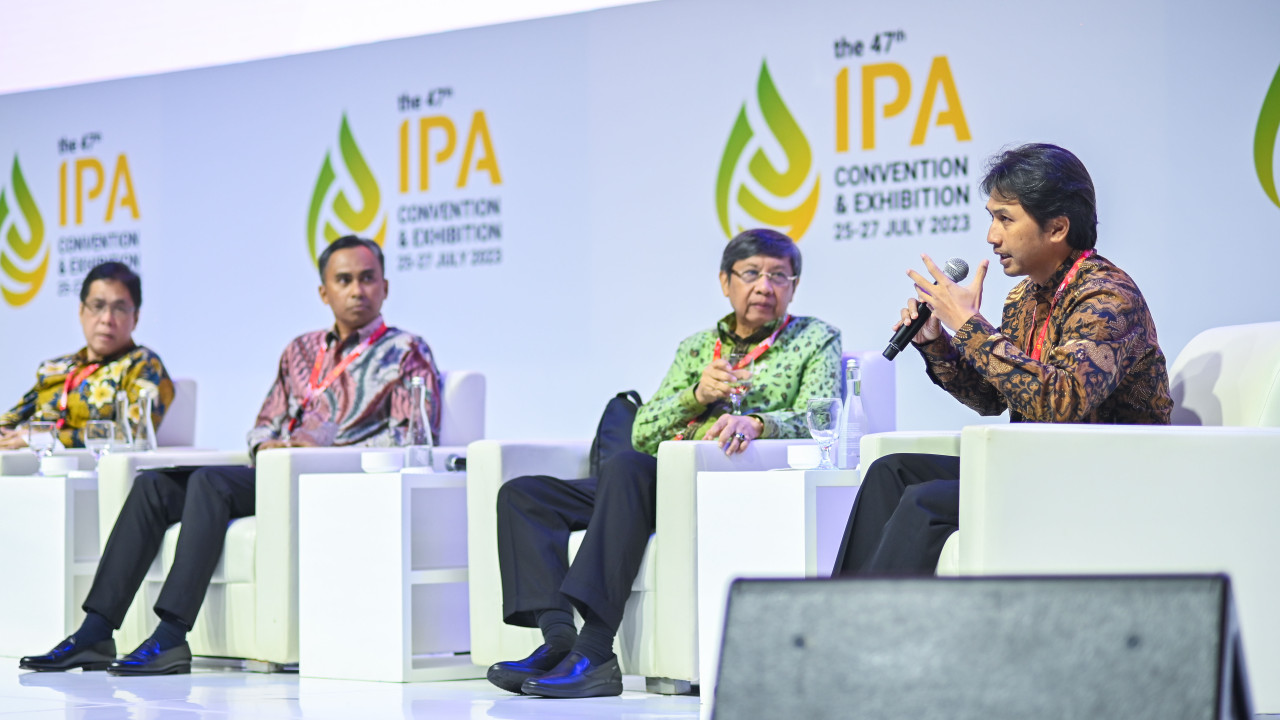The Urgency of Fiscal Improvement and Perspectives for the Monetization of Oil and Gas Reserves in Eastern Indonesia
The government has targeted national oil and gas production of 1 million barrels of oil per day and 12 BSCFD of gas by 2030. These targets can be achieved by several strategies, such as optimizing existing production, accelerating reserves into production, utilizing Enhanced Oil Recovery (EOR) and Enhanced Gas Recovery (EGR) and boosting exploration.
Exploration activity is one of the pillars to achieve the production target. In early 2022 the government set five focused areas for further exploration, all in eastern Indonesia namely Buton, Arafura, Seram, Warim and Timor which cover 12 potential basins.
Benny Lubiantara, Deputy for Exploration Development and Management of Working Areas of the Special Task Force for Upstream Oil and Gas Business Activities (SKK Migas), said that Eastern Indonesia is one of the regions that is relied on to make major contribution in meeting production targets. However, it must be admitted that there are challenges such as locations at the frontier, deep sea and limited infrastructure.
According to him, one of the focuses that must be improved is fiscal policy. " For sure, the resources (oil and gas reserves) are convincing, but the reserves cannot be produced due to economic factors. As regards fiscal, there has been no significant fiscal policy for the past 30 years," said Benny at the Special Topics discussion session, titled "Capture High Potential Untapped Resources and Build A Competitive Oil and Gas Portfolio” on the third day of IPA Convex 2023, Thursday (27/7).
The potential in these five areas that have been set by the government really needs attractive fiscal policies and proper economic schemes because the volume of potential reserves is significant. Based on SKK Migas data for Buton, the reserves are 1 BBO and 4 TCFG, Seram 8 BBOE, Aru 6 BBO and 50 TCFG, Warim 34 BBOE and Timor 5 BBOE.
According to him, the target for oil and gas production by 2030 can still be achieved, especially based on the reserves. However, there are two conditions that must be met. First, the existing reserves can be developed and in accordance with the economy. Second, to ensure that planned projects can be completed according to schedule.
"We have a list of reserve lists, but all projects are not economical (under the current situation). For this reason, we are ready to launch incentives. Next, we have to make sure that this project is not delayed. A delay of this project will change its economy,” said Benny.
Yuzaini Bin Md Yusof, President Director of Petronas Indonesia, said that Petronas still believes the great potential in the Eastern Indonesia region, which is why Petronas is very aggressive. One of them was recently signed with Pertamina to enter the Masela project.
According to Yuzaini, based on IHS 2023 data, the number of exploration drilling in eastern part of Indonesia is far less than in the western part. However, in terms of volume, reserves found in eastern Indonesia are greater.
"The well is a slightly to the east but the volume found is larger. Gas is dominant. Asap Kido Merah is an example, while some small discoveries are in western Indonesia," he said.
However, to develop eastern Indonesia, many initiatives are needed, one of which is in terms of providing infrastructure.
"Market access is also important, infrastructure in the east differs from that in western Indonesia. In the western region infrastructure is available and even connected to Singapore, there is also the Java Island. Meanwhile in the eastern part there is less infrastructure, it is only connected by LNG. Meanwhile, there is no market yet, not many industries there (eastern Indonesia)," Yuzaini explained.
In addition, availability of data and the use of technology are also keys to successful exploration, especially in the eastern part. As in the case of Petronas’ Hidayah well, off the coast of East Java, Yuzaini explained that technology is an important key in finding oil and gas reserves in eastern Indonesia.
"The most important thing is to rely on data and technology, the Hidayah discovery - prior to drilling - we explore and finalize seismic with the latest technology. Technology continues to develop, that is the key. We are confident of the potentials in eastern Indonesia, that is why we are present there," explained Yuzaini.
Meanwhile, Pri Agung Rakhmanto, an oil and gas practitioner and also the founder of the Reforminer Institute, stated that the government’s effort to monetize existing oil and gas reserves is quite positive. But that alone is not sufficient because the conditions of existing reserves in difficult areas require extra effort. "Oil and gas business actors need easier practice in the field and flexibility, in general, we all are aware of the problems," said Pri Agung.
He said that oil and gas business actors still view Indonesia as prospective in terms of reserves, on the other hand, business actors also consider other countries as a comparison. "We need to put in more effort, start translating the view of oil and gas, from oil and gas as extracting revenue and, oil and gas as an economic driver into real action. We need to change the way Indonesia views oil and gas and cast this view into the oil and gas law. So for example, if you fail to get reserves, do not consider it a loss to the state," explained Pri Agung. (*)


